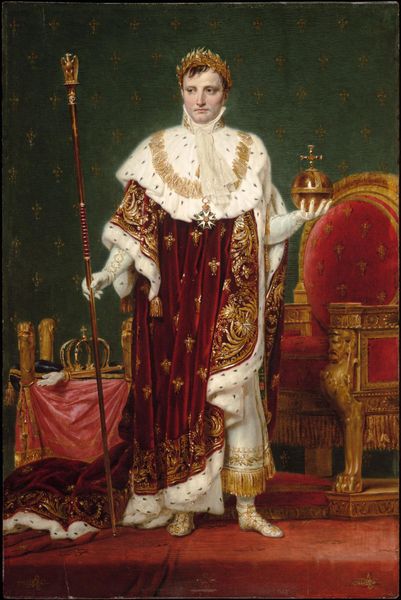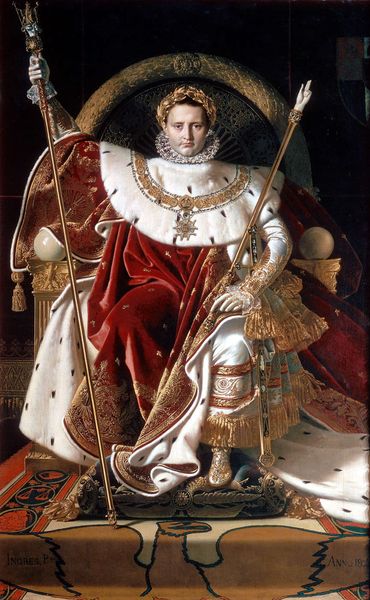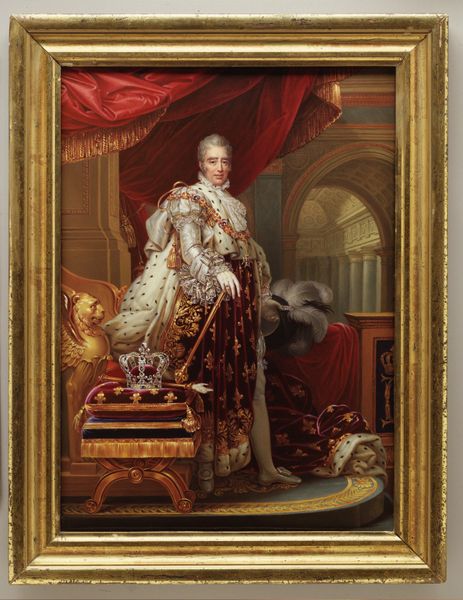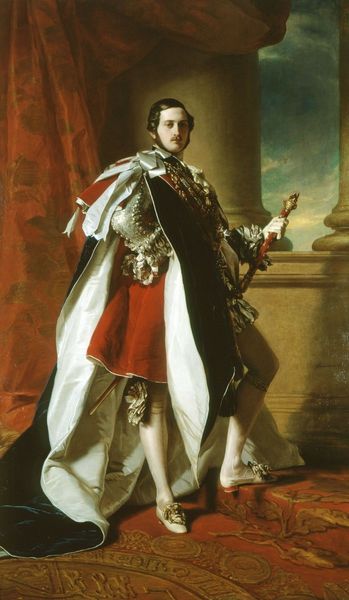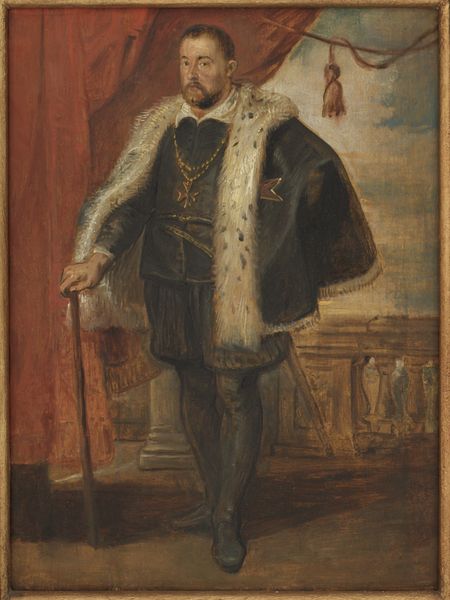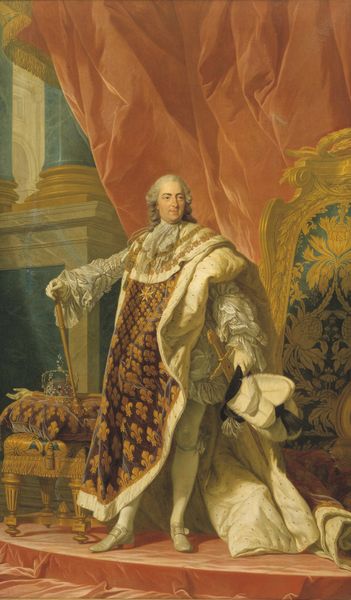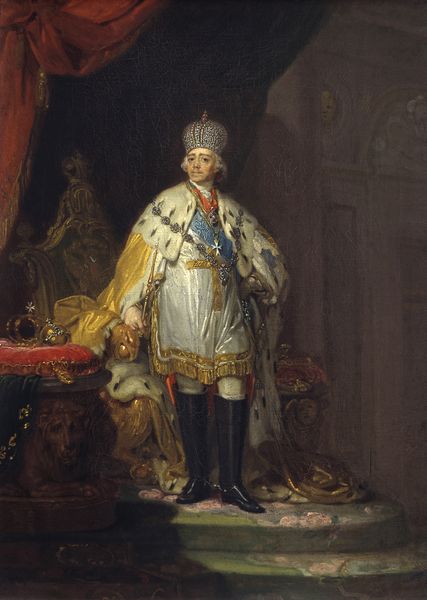
painting, oil-paint
#
portrait
#
neoclacissism
#
painting
#
oil-paint
#
figuration
#
classicism
#
history-painting
#
academic-art
#
portrait art
Copyright: Public domain
Editor: Here we have François Gérard's *Emperor Napoleon I in coronation costume*, painted in 1805. It’s an oil painting currently hanging in the Louvre. He looks every inch the emperor, doesn’t he? But something about the stiffness of the pose feels almost…theatrical? How do you interpret this work? Curator: That “theatrical” feeling is key. Consider Napoleon's carefully constructed image: power solidified through visual rhetoric. This portrait isn’t just a likeness; it’s a strategic deployment of symbols to reinforce his authority after seizing power. Note the Neoclassical style; can you see the references to Roman emperors? Editor: I see the laurel wreath, the staff… all alluding to the power of Roman emperors. Curator: Exactly! He's consciously crafting a narrative of himself as a legitimate ruler, linking himself to the grandeur of past empires. The ermine robe and the opulent surroundings, however, speak to a more contemporary kind of authority – a visual language of monarchy, even as the French Revolution purported to reject it. Do you think it reinforces the notion of meritocracy, given his rise through the ranks? Editor: Not really, all those traditional symbols of royalty… they look rather hereditary, erasing the revolution values. It's fascinating to see how he juggles these competing messages. It's almost as if he’s attempting to rewrite history. Curator: Precisely! The portrait participates in that very rewriting, blurring the lines between revolution and empire, between citizen and sovereign. It is not a statement of fact, it's a calculated performance aimed at shaping public perception and legitimizing his reign. Editor: I never thought of it that way. Looking beyond the surface to understand the social and political forces at play. Thanks! Curator: My pleasure. Art always reflects a dialogue between power and its representation.
Comments
No comments
Be the first to comment and join the conversation on the ultimate creative platform.


